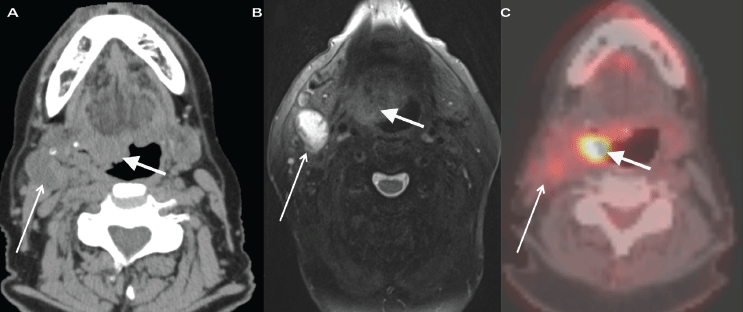Prospective Study Links HPV Detection in the Mouth to Head and Neck Cancer
, by NCI Staff
In a new study, researchers have confirmed that infection with human papillomavirus (HPV) 16 precedes the development of some head and neck cancers. Previous studies have established an association between HPV-16 infection and oropharyngeal cancer, a type of head and neck cancer. The new study is the first to do so using samples collected from participants prior to their cancer diagnoses.
The study also reported, for the first time, an association between head and neck cancer risk and infection with HPV types other than HPV 16.
Ilir Agalliu, M.D., Sc.D., and Robert D. Burk, M.D., of Albert Einstein College of Medicine in New York, and their colleagues reported the results of this prospective study January 21 in JAMA Oncology.
Infection in the oral cavity with cancer-causing types of HPV, especially HPV 16, is a risk factor for some types of head and neck cancer, particularly oropharyngeal cancers. In the United States, the incidence of oropharyngeal cancers caused by HPV infection has been increasing.
To conduct the study, the researchers analyzed data on oral HPV infection and risk of head and neck cancer in two large national prospective studies: the American Cancer Society Cancer Prevention Study II Nutrition Cohort and the Prostate, Lung, Colorectal, and Ovarian Cancer Screening Trial.
At the start of each cohort study, all participants were cancer free and provided a mouthwash sample to researchers. After an average of nearly 4 years of follow up, a total of 132 participants had been diagnosed with head and neck cancers.
Mouthwash samples (containing oral cells) from the participants who developed head and neck cancer and from 396 healthy matched control individuals were analyzed for the presence of HPV DNA. After adjusting for smoking history and alcohol consumption, the researchers estimated that individuals with HPV 16 in their mouthwash samples had substantially greater odds of developing oropharyngeal cancer than participants with no detectable HPV 16 in their mouthwash samples.
“The results of this study provide, for the first time, clear evidence that detection of HPV-16 DNA in the oral cavity precedes the diagnosis of oropharyngeal cancers and confers a substantial risk for these cancers,” said Dr. Agalliu.
Previous studies had found that, in addition to containing HPV types of the alpha genus (which includes mucosal HPV types such as HPV 16 and other cancer-causing HPV types), the mouth contains a broad range of other HPV types. So the researchers also investigated whether any of these were associated with head and neck cancer. They found that the presence in the mouth of several beta- and gamma-HPVs that are usually found in the skin was also associated with the development of head and neck cancer.
“These findings inform our thinking about the etiology of oropharyngeal cancer—specifically, oral HPV preceding its diagnosis. However, it would be premature to consider the detection of oral HPV as a screening test,” said study coauthor Aimée R. Kreimer, Ph.D., of NCI’s Division of Cancer Epidemiology and Genetics.
“We also need to better understand the role of other risk factors—namely, cigarette smoking and alcohol consumption—and how they interact with oral HPVs in head and neck cancers,” Dr. Burk added.
